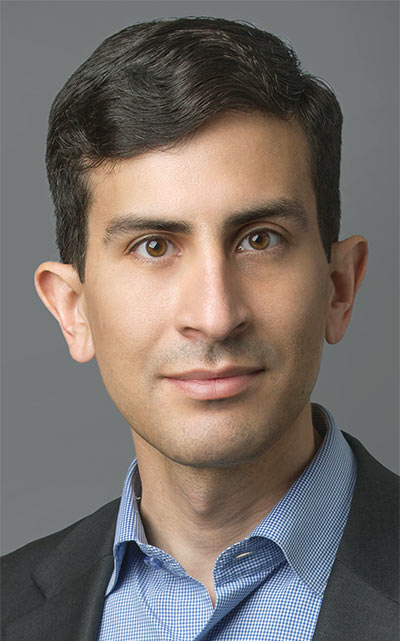

Sovereign nations around the globe have clearly defined borders, but as attendees were shown at a UN Conference several years ago, cybercrime is a borderless phenomenon. In 2011 Norton Security released statistics that showed that every 14 seconds an adult is a victim of cybercrime and the numbers are growing. As internet use grows, so does the amount and type of information streaming across the web. This information crosses transnational lines, public and private sectors. more
 This post examines whether the new gTLDs program is a disruptive innovation to the dominance of .com. I then use the idea of disruptive innovation to explain the relative adoption failure of previous generic Top-Level Domains (gTLDs), such as .biz, .info and .mobi. Harvard Professor Clayton Christensen's theory of disruption explains battles between market entrants and incumbents. Examples of markets transformed by disruptive innovations include classified ads (Craigslist), long-distance calls (Skype), record stores (iTunes), research libraries (Google), encyclopedias (Wikipedia), and taxis (Uber). more
This post examines whether the new gTLDs program is a disruptive innovation to the dominance of .com. I then use the idea of disruptive innovation to explain the relative adoption failure of previous generic Top-Level Domains (gTLDs), such as .biz, .info and .mobi. Harvard Professor Clayton Christensen's theory of disruption explains battles between market entrants and incumbents. Examples of markets transformed by disruptive innovations include classified ads (Craigslist), long-distance calls (Skype), record stores (iTunes), research libraries (Google), encyclopedias (Wikipedia), and taxis (Uber). more
 The importance of engaging with all the necessary stakeholders in your .brand TLD and ensuring you have company-wide buy-in cannot be understated. But once you have all these players in a room together, what's next? Every brand launching its own TLD will move through the process differently. Unfortunately for those managing this project, there is no single, 'off-the-rack' strategy that will suit every .brand TLD's individual requirements. more
The importance of engaging with all the necessary stakeholders in your .brand TLD and ensuring you have company-wide buy-in cannot be understated. But once you have all these players in a room together, what's next? Every brand launching its own TLD will move through the process differently. Unfortunately for those managing this project, there is no single, 'off-the-rack' strategy that will suit every .brand TLD's individual requirements. more
 ICANN's mission, and the avoidance of "mission creep", is currently the subject of intense debate in the Internet community. Multiple cross-community working groups are dealing with the proposal by an agency of the United States government, NTIA, to give up the last vestiges of its control of the IANA function. Many of the new organizational structures under consideration purport to deal with ICANN's expanding mission. more
ICANN's mission, and the avoidance of "mission creep", is currently the subject of intense debate in the Internet community. Multiple cross-community working groups are dealing with the proposal by an agency of the United States government, NTIA, to give up the last vestiges of its control of the IANA function. Many of the new organizational structures under consideration purport to deal with ICANN's expanding mission. more
 Google has a newly created parent, a holding company that is now its official owner. Of course, Google will keep using its extremely well-known name for its core search and related businesses. But the company now operates under an entity known as Alphabet -- to give its name with extension, Alphabet.xyz. Here specialists in gTLDs may be scratching their heads. Why .xyz? Why this little-known domain for one of the world's great corporations? more
Google has a newly created parent, a holding company that is now its official owner. Of course, Google will keep using its extremely well-known name for its core search and related businesses. But the company now operates under an entity known as Alphabet -- to give its name with extension, Alphabet.xyz. Here specialists in gTLDs may be scratching their heads. Why .xyz? Why this little-known domain for one of the world's great corporations? more
 The attention of DotConnectAfrica Trust (DCA Trust) has been drawn to a recent blog posting by John Jeffrey, the ICANN General Counsel and Company Secretary, who wrote to clarify what he termed as "misinformation and erroneous reporting that have framed parts of the discussion" regarding the recent DCA vs. ICANN IRP Final Declaration. As we can't see a way of making comments on his blog, DCA Trust as a directly affected party, will respond to the issues Mr. Jeffrey has advanced... more
The attention of DotConnectAfrica Trust (DCA Trust) has been drawn to a recent blog posting by John Jeffrey, the ICANN General Counsel and Company Secretary, who wrote to clarify what he termed as "misinformation and erroneous reporting that have framed parts of the discussion" regarding the recent DCA vs. ICANN IRP Final Declaration. As we can't see a way of making comments on his blog, DCA Trust as a directly affected party, will respond to the issues Mr. Jeffrey has advanced... more
 E-commerce has revolutionized how businesses sell to consumers -- including those involved in illicit activities, such as websites peddling illegal narcotics, pirated movies and music, or counterfeit handbags. For example, 96 percent of Internet pharmacies do not comply with U.S. laws, and as they ship pills tainted with paint thinner, arsenic, and rat poison, they put the health and safety of consumers at risk. Why don't law enforcement officials do more to combat this problem? Partly because of the difficulty of identifying who is actually operating the illegal pharmacies. It is time to fix this, while allowing anonymity for those who deserve it. more
E-commerce has revolutionized how businesses sell to consumers -- including those involved in illicit activities, such as websites peddling illegal narcotics, pirated movies and music, or counterfeit handbags. For example, 96 percent of Internet pharmacies do not comply with U.S. laws, and as they ship pills tainted with paint thinner, arsenic, and rat poison, they put the health and safety of consumers at risk. Why don't law enforcement officials do more to combat this problem? Partly because of the difficulty of identifying who is actually operating the illegal pharmacies. It is time to fix this, while allowing anonymity for those who deserve it. more
 Price comparison sites, including those for domain registrations, are supposed to benefit buyers. Do they? Recent theory and practice suggest a friend-and-foe relationship. Comparison sites introduce an entire layer of costs, notably including the sites' marketing costs. more
Price comparison sites, including those for domain registrations, are supposed to benefit buyers. Do they? Recent theory and practice suggest a friend-and-foe relationship. Comparison sites introduce an entire layer of costs, notably including the sites' marketing costs. more
 There's a lot of .buzz about Google's new holding company, Alphabet. From .NYC to .London to .Tokyo the "new Google" story is making .news everywhere, as the .media large and small speculates on what it means for the .online and .tech industries, and beyond. After all, as one of the .top brands and companies in the .world, when Google makes a move it can have .global impact. more
There's a lot of .buzz about Google's new holding company, Alphabet. From .NYC to .London to .Tokyo the "new Google" story is making .news everywhere, as the .media large and small speculates on what it means for the .online and .tech industries, and beyond. After all, as one of the .top brands and companies in the .world, when Google makes a move it can have .global impact. more
 Developing a .brand TLD strategy requires resources and input from almost every function in your organisation. Unfortunately, most organisations that applied for a .brand TLD have successfully de-prioritised the project to the point where even the executives who signed off on the project in 2011/2012 may need to be reminded what it is. Funding allocation may or may not still exist. Your digital brand roadmap may or may not include reference to the TLD. more
Developing a .brand TLD strategy requires resources and input from almost every function in your organisation. Unfortunately, most organisations that applied for a .brand TLD have successfully de-prioritised the project to the point where even the executives who signed off on the project in 2011/2012 may need to be reminded what it is. Funding allocation may or may not still exist. Your digital brand roadmap may or may not include reference to the TLD. more
September 7th 2015 will see the Global IPv6 Next Generation Internet Summit 2015 (hereinafter referred to as IPv6 Summit) held in the Presidential Hotel Beijing. The conference will be co-hosted by the IPv6 Forum and BII Group, under the theme of "IPv6 approaching, are you ready?," which will be well attended by top-notch industrial experts both at home and abroad, hundreds of representatives from carriers across the globe, representatives of well-known vendors in the industry, experts from academic agencies, enterprise users, and many influential news outlets, who will discuss the mainstream plans and technical foci of large-scale IPv6 deployment, influence and challenges brought by IPv6 development on network security, Global Internet of Things boosted by IPv6, and other burning issues. more
 In my last blog post I shared some of the general security challenges that come with the Internet of Things (IoT). In this post, I will focus on one particular security risk: distributed denial of service (DDoS) attacks. Even before the age of IoT, DDoS attacks have been turning multitudes of computers into botnets, attacking a single target and causing denial of services for the target's users. By "multitudes" we can be talking about thousands or even millions of victim devices. Now add IoT into the equation... more
In my last blog post I shared some of the general security challenges that come with the Internet of Things (IoT). In this post, I will focus on one particular security risk: distributed denial of service (DDoS) attacks. Even before the age of IoT, DDoS attacks have been turning multitudes of computers into botnets, attacking a single target and causing denial of services for the target's users. By "multitudes" we can be talking about thousands or even millions of victim devices. Now add IoT into the equation... more
 Shadow IT -- the use of unsanctioned software and services by employees -- is a problem. It's a big one. According to Forbes, 72 percent of executives don't know how many "shadow" apps are being used on their network. Beyond overloading network resources and impacting data compliance, there is also the real threat of security breaches from unapproved apps. Managing IT you can't see is no easy task, but fortunately it's not impossible. Here are five tips to help bring light to the shadows. more
Shadow IT -- the use of unsanctioned software and services by employees -- is a problem. It's a big one. According to Forbes, 72 percent of executives don't know how many "shadow" apps are being used on their network. Beyond overloading network resources and impacting data compliance, there is also the real threat of security breaches from unapproved apps. Managing IT you can't see is no easy task, but fortunately it's not impossible. Here are five tips to help bring light to the shadows. more
 Over the last few years I've been hearing some people claim that botnets are the real spam problem and that if you can find a sender then they're not a problem. Much of this is said in the context of hating on Canada for passing a law that requires senders actually get permission before sending email. Botnets are a problem online. They're a problem in a lot of ways. They can be used for denial of service attacks. They can be used to mine bitcoins... more
Over the last few years I've been hearing some people claim that botnets are the real spam problem and that if you can find a sender then they're not a problem. Much of this is said in the context of hating on Canada for passing a law that requires senders actually get permission before sending email. Botnets are a problem online. They're a problem in a lot of ways. They can be used for denial of service attacks. They can be used to mine bitcoins... more
 The IANA Stewardship Transition process may have started more than a year ago, but last week it reached its pinnacle with the publication of the compiled Proposal to Transition the Stewardship of the Internet Assigned Numbers Authority (IANA) Functions from the US Commerce Department's National Telecommunications and Information Administration (NTIA) to the Global Multistakeholder Community" by the IANA Coordination Group (ICG). more
The IANA Stewardship Transition process may have started more than a year ago, but last week it reached its pinnacle with the publication of the compiled Proposal to Transition the Stewardship of the Internet Assigned Numbers Authority (IANA) Functions from the US Commerce Department's National Telecommunications and Information Administration (NTIA) to the Global Multistakeholder Community" by the IANA Coordination Group (ICG). more
Sponsored byDNIB.com

Sponsored byCSC

Sponsored byRadix

Sponsored byWhoisXML API

Sponsored byVerisign

Sponsored byVerisign

Sponsored byIPv4.Global
